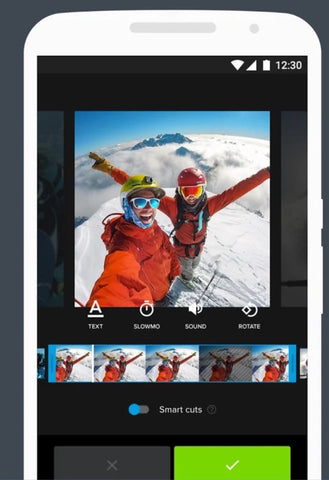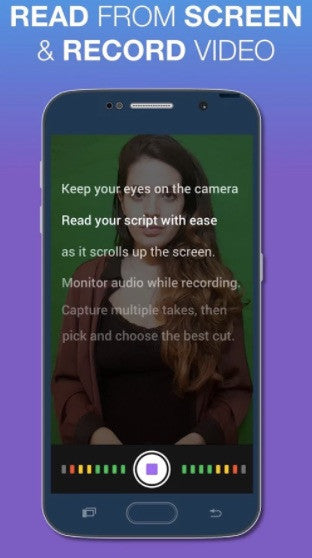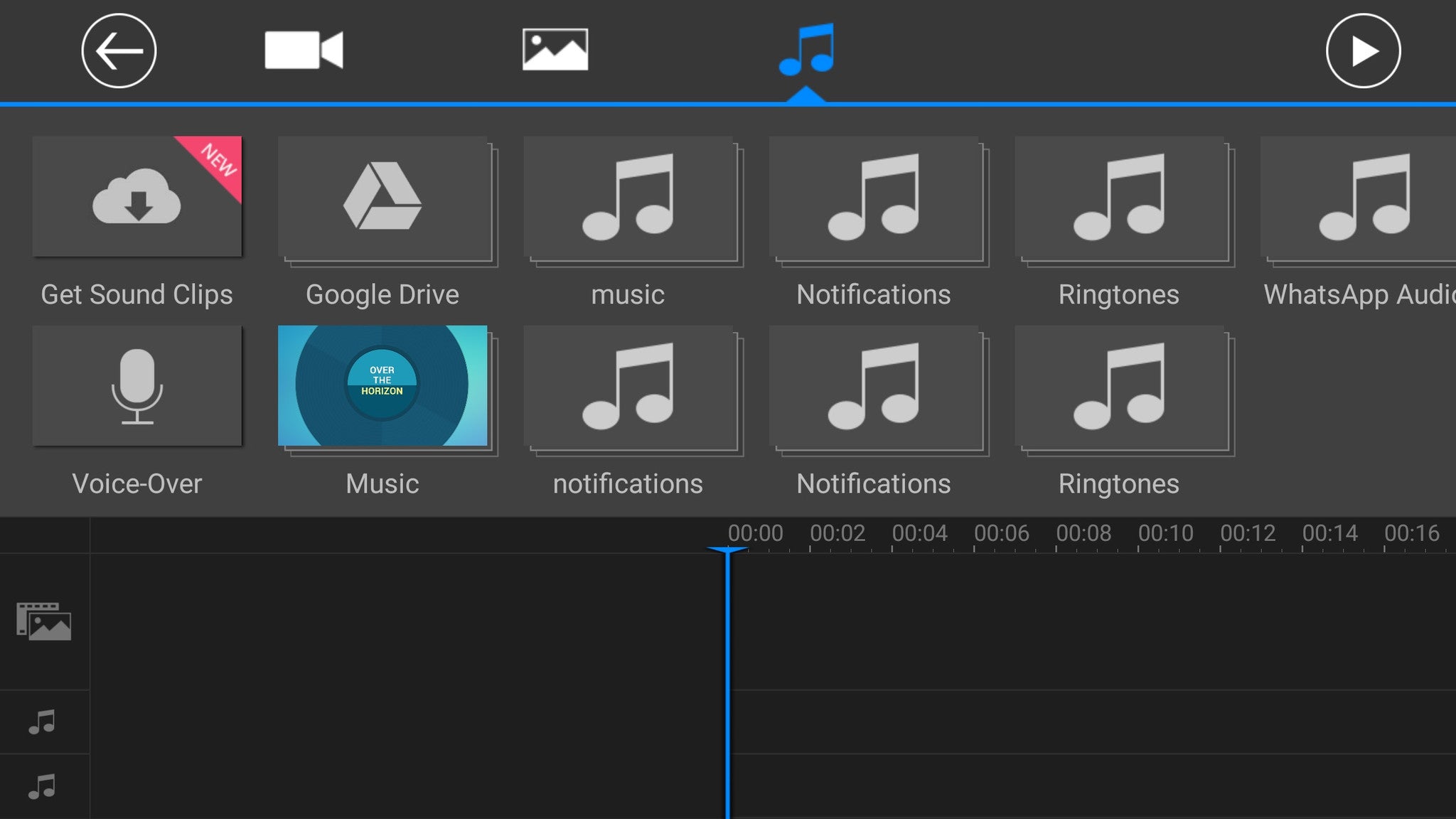When it comes to making videos to promote your business—to engage your audience, to showcase your products—professional quality usually demands professional prices.
But sometimes you don’t need Hollywood production values in your videos. Sometimes you just need good videos that you can turn around fast and for free (or at least fairly cheap).
If you haven't thought about incorporating video into your marketing strategy, you should consider it—video is an incredibly versatile format after all:
- Videos can live in several places: The same video can potentially be used on Facebook, Instagram, Twitter, YouTube, SnapChat, Tumblr, Reddit, embedded on your website/blog, etc.
- Videos make for eye-catching social media posts/ads: Audiences can read, watch, and listen, so video can engage them in a different way than static imagery. Plus, videos play automatically on some channels like Facebook.
- Videos can be repurposed into new videos and from other content formats: Video content can be clipped down, expanded upon, or converted into new videos or GIFs. You can also take infographics, blog posts, photos, and other types of content, and turn them into videos.
Not only that, but video's share of total bandwidth is predicated to grow to encompass more than 80 percent of all consumer internet traffic by 2020, making it the content format of the future.
The best part is that just because you don’t have the budget, doesn’t mean you can’t reap the benefits of video content.
Why make videos for your business?
Does creating a video seem like too much effort? Well, we know it takes time to create videos. We also know it takes a whole lot of effort to get your audience to watch it. But here's why we think you should be making videos for your business:
- Internet users are estimated to spend about 100 minutes a day watching videos online in 2021
- 48% of consumers want videos to reflect what they're truly interested in (that's why storytelling)
- 66% of millennial internet users watch online videos every day

Free Video Series: Ecommerce Inspiration
Feeling uninspired? Watch some of the world's most successful entrepreneurs share their best advice for new business owners.
Get our Ecommerce Inspiration video series delivered right to your inbox.
Almost there: please enter your email below to gain instant access.
We'll also send you updates on new educational guides and success stories from the Shopify newsletter. We hate SPAM and promise to keep your email address safe.
How to make a video for your business
Convinced why videos should be included in your marketing strategy? Now let's give you a step-by-step into creating a video.
1. Plan your video out
First things first, plan out your video and what it is for. This is important so that you're able to measure how the video adds value to your business. Here are a few questions you should be answering here:
- Who's your target audience?
- What's the goal of your video?
- Where are you going to post the video?
- What's your budget for the video?
- What are the success metrics for the video?
2. Create a script for your video
Before you begin shooting your video, it is important to create a script. While impromptu is the way to go for AMA or live videos, recorded ones need a bit of direction to avoid spilling over content. We know how enthusiastic one can get when talking about their business.
3. Get your cameras in place
We're not saying you need the fanciest of DSLRs to shoot your videos. You can even use your smartphones to shoot your videos. Just make sure, whatever your choice, the lens is of good quality to get you a high-quality video.
4. Set up a studio for your video
Whether you're shooting the video at a specific location or at home, set up a little studio for yourself. You need to make sure that the environment you're shooting the video in, enhances your storyline. For example, if you're shooting a product video, you need to make sure that the surroundings are not too distracting and you have the set up in a place where there is ample light.
5. Shoot the video
Get to work! You have everything in place so you set aside your hesitance and shoot the video.
6. Take note of your best clips
Go through your video clip by clip. Start taking note of your best-captured moments in the video. These needs to be the bits in the video where your videography stood out or you were able to capture your storyline the best.
7. Edit your video
Once you have identified the best clips in your video, it's time to get to some editing. Enhance the good parts, speed up the ones that are not engaging, add some effects to create a theme and add in your branding.
8. Choose your music
Want to add a little effect to your video? Add a bit of music to the video. It's similar to how when a thriller plot comes on and the music in the backdrop makes it more intense. Don't worry, we're linking you to some resources to get music for your video.
9. Add an audio or voiceover
If you're telling a story, make it more compelling by adding an audio or a voiceover on top of the video. It's like watching TV! If there was no audio, you'd not spend any more than 5 minutes watching the video.
10. Annotate your videos
Some viewers may watch your videos without the sound on. So make sure you annotate your videos for the voiceover/ audio you just added. Even if you don't have a voiceover in place, annotate your videos so that the viewer knows what they're looking at and perceive it the way you want them to. You can do this using apps like Typito.
Now that you know what to do, it's time to equip you with all the resources and tools you need to create a video.
Resources to help you make a video (without hiring a professional)
While it definitely helps, you don’t necessarily need expensive equipment or even your own original footage to produce videos.
All you need is a concept in mind and an idea of what you want to use the video for.
From there, it's a matter of:
- Creating a rough storyboard of how you plan for it to flow and writing a script if you need one.
- Finding or creating the footage or audio you need.
- Editing it together in one of the many apps in this post, depending on your needs.
- Packaging it up and uploading it as a social media post, ad, YouTube video, etc.
Where to look for free stock footage and music
When you think about it, you don't really need a camera to make your own videos.
You can repurpose existing photography, get what you need from stock footage sites, and even shoot your own footage with your phone if you really need to.
There’s a lot of places you can look for great free stock footage, fitting music and cool sound effects.
Depending on how the content is licensed, however, you might need to credit the creator of the footage you borrow or pay to use it for commercial purposes. For details on how and when to do this, check out the Creative Commons best practices for attribution and be sure to take a closer look at the conditions for use on each of the following sites.
Free stock videos
- Videvo: Completely free high quality HD footage and motion graphics.
- Pexels: Free photos and videos from around the world.
- Distil: 10 new high quality videos for commercial use every 10 days, delivered to your inbox.
- Pixabay: Tons of vibrant videos, photos, and animations you can use.
Public domain (not subject to copyright)
- Pond5: Home to lots of historic footage.
- Archive.org: Footage of games, films, historic moments, etc.
- NASA: Footage and photos of space.
- Critical Past: Vintage videos.
Free music and audio
- Freesound.org: A variety of sounds you can use at no cost.
- Looperman: A capella vocals, music, and sounds you can use if you credit the creator.
- Converse Sample Library: Plenty of cool music and rhythms for you to sample.
- YouTube Audio Library: A great resource for good quality music and sound effects meant for creators.
Paid stock music and footage
While you do have to pay, Audio Jungle and Video Hive are popular places to find sounds, music, video effects and stock footage to use and sample. They also offer free music, video templates, and more every month if you subscribe.
Free tools to help you make your own videos
While you can record video natively in most video hosting platforms like Facebook, Instagram, and YouTube, there are plenty of good video editing apps for producing quick, polished videos for different occasions and in a short span of time.
I highly recommended giving the following tools a try, many of which are free and some of which come with their own library of stock imagery and other assets for you to use.
1. Quik by Go Pro: Produce simple product videos
Go Pro is famous as a camera company for helping people capture awe-inspiring moments in action.
Quik is a video editing app by them that lets you easily import and rearrange images and footage, adding text and music as you like.
While it's meant for weaving together memories from your last vacation, it's also a great way to create simple product videos, especially if all you have is product photos.
With this app, you can create an engaging slideshow or a short video in no time at all.

2. Lumen 5: Convert articles into videos
You’ve probably seen videos on social media that are simple slides of images or short clips that explain an idea or tell a story.
Did you know you could easily make them yourself with a free tool called Lumen 5?
Simply import an existing article, pick the parts of the text you want to include, edit it down so it flows nicely, choose your music, and you've got yourself a video. You can even start from scratch.
You can even brand these videos and add a call to action at the end to direct viewers to take whatever next step you'd like them to.
Here's a video I made out of a post I wrote about the creative process (it took me roughly 10 minutes to create and 15 minutes to render):
— braveen kumar 🤔 (@braveenk) March 27, 2018
3. Teleprompter Video Creator: No more memorizing your lines
I don’t know about you, but I have a pretty bad memory. That's what makes this Teleprompter app by BigVu so great.
It basically combines a teleprompter and a camera into one app. You just paste in your script, and it lets you read as you record to make your videos look natural without having to prepare too much in advance.
If you've ever wanted to start vlogging or put on a live stream, but worry about tripping on your words, this is for you.

4. Giphy: Turn your videos into GIFs
GIFs are (arguably) just videos without sound. And with Giphy you can either convert your existing videos into GIFs or edit/caption existing GIFs.
Giphy is also a great place to find cinemagraphs, which are essentially photos with a single isolated element in motion.
You should take advantage of the fact that GIFs loop endlessly and can be used to create engaging memes to complement your social media strategy.
5. Resolve: Free desktop video editing software
While you can always use iMovie or Windows Movie Maker for editing, Da Vinci Resolve by Black Magic is a free video editing software that comes with the kind of professional features that let you do color corrections, remove objects, stitch together footage, and more.
It will take some time to learn if you're new to video editing, but it's one of the best free solutions out there for editing professional looking videos.

6. Power Director: A robust video editor for your phone
If you'd like to shoot and edit videos all on your phone, Power Director is an app that comes with a lot of the useful features.
The advantage of a mobile video editor like this is that you can record new footage and audio straight from your phone and directly import it into your work in your progress, making it easy to do things like voiceovers.
While this is an Android app, iPhone users can use the iMovie app or Splice by Go Pro as an alternative.

Now, before you go on to create a video, let's quickly jump into what really constitutes a great video. And by a great video we mean one that gets you business or adds value to it in one way or the other!
What makes a great video?
The assets and tools above make videos easier to create, but there's a lot more to know about using these videos effectively in your marketing.
For one, videos that provoke an emotional reaction tend to perform better and have more viral potential, especially on Facebook. Since social videos are often watched with the sound off, captions also go a long way in increasing viewership.
Thumbnails also matter a lot as they are essentially the "headline" of your video that entices people to watch. Use Canva to easily create eye-catching thumbnails for your videos if you're going to upload your videos to YouTube or another platform that pits you against other videos.
Finally, since it's not just how you create the videos but how you upload them too, you should be wary of the specifications for each channel.
If you're going to embed your videos on your blog or website, make sure they're responsive on mobile. If you're struggling to make that work, you can use the Embed Responsively tool to fix the embed code for you.
But let's take a look at some of the golden rules of videos that work really well:
1. Focus on telling a story, not pushing a sale
Rule no. 1. Make your video non-promotional. If it doesn't convey a story, or becomes too pushy about a sale, you're going to lose out on a potential follower or even a buyer. Value and engagement first, sale second.
2. Make your first few seconds captivating
The average video watch time is about 10 seconds. Now that's a little too less for you to get your brand message across. That's why the first few seconds of your video need to be captivating. A good way to do this is to create a hook at the start of your storyline - something that generates curiosity in the watcher and makes them want to know the complete picture.
3. Share your story with and without sound
Did you know that about 80% of videos viewed on social media are with the sound turned off? That's because at most times, your audience is either at office or at home in a set up where they don't the sound of the video blaring. That's why when you create a video, make sure your story comes through with and without sound. Either the visuals speak for themselves or you can use annotations to help the viewers understand the video.
4. Include call-to-actions
No matter what content you create, it needs to have a purpose and your viewer should be able to understand what that purpose is. In this case, we're talking about what you want the viewer to be doing after watching your video. So make sure you drop in a few call-to-actions midway through the video like asking them to visit a website or follow you on social media. Similarly, do the same at the end of the video. But never leave the next steps for guesswork.
5. Optimize your video for search
Just like content, a successful video is one that people are looking for. So you need to optimize your video for the search engines. This means looking into what kind of videos your target audience is consuming, what keywords they use to look for those videos and how you can offer them that content via your videos. Also make sure that your video descriptions give the viewer a summary of what the content is all about. This is also one of the best places to include some long-tail keywords.
6. Collaborate with your followers, influencers and other brands
One time-tested tactic to make your videos more engaging, is to get your audience involved. Or maybe get someone they follow or look up to, involved. You can ask your followers, a popular influencer or even other complementary brands to join you in on videos. These don't need to be scripted - you could record a simple discussion, an AMA session or simply give them a platform to share their stories.
Getting started with videos for your business
Whether you’re making videos or another type of content, quality is inevitably how you compete. But it doesn’t necessarily have to cost you a lot.
Entrepreneurs and creators can always make up for what they lack in resources with resourcefulness.
So if you have a hunch that videos can take your marketing to the next level, don't let the perceived costs and amount of effort stop you. You can get started for free using these resources and work your way up from there.
Trying to learn how to make videos for your Instagram reel? Read this blog: Why and how to use Instagram reels to market your Shopify store.

